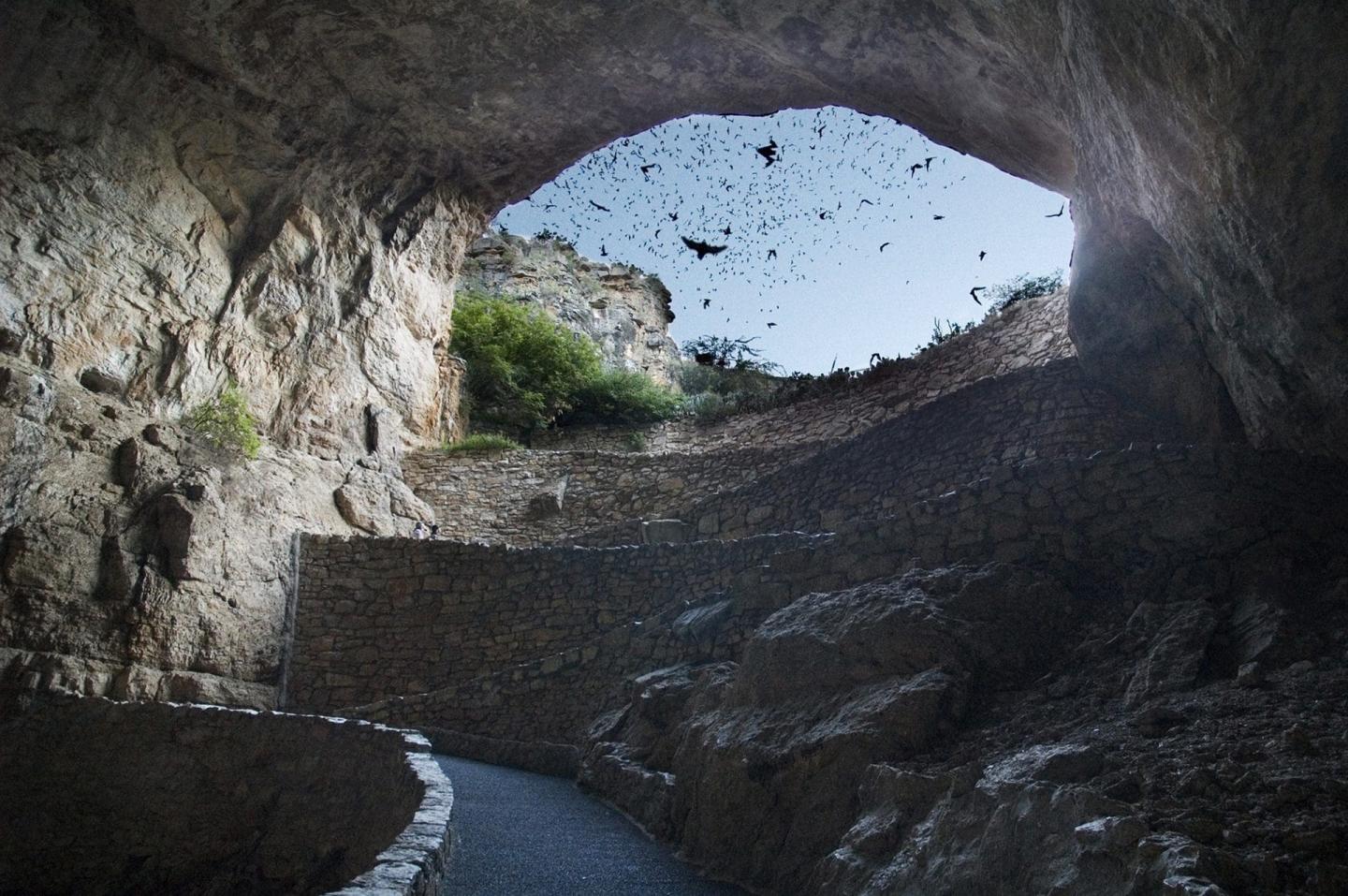
A Visitor's Guide to Bats in National Parks

If you’ve been outside during dawn or dusk, you may have been lucky enough to spot a bat on the wing. These fascinating creatures are the only mammals in the world that fly, and more than 1,400 different species can be found throughout the world. There are also plenty of opportunities to see bats in national parks, as the National Park Service has documented nearly 50 species living on sites that they manage.
You might be surprised to learn about some of the many supporting roles that bats play in different ecosystems—including how their presence can benefit humans too. Learn more about why bats are so important, and how you can watch these creatures in their natural habitats.

Why Bats Are Important To Our Food System
Did you know that nearly 70 percent of all bat species eat only insects? Because of this, many bats play the role of “pest control” in the areas that they live. By lowering the amount of insects in the environment, bats can reduce the spread of insect-borne diseases. It also means that these insect pests won’t be able to damage as many crops, making bats helpful to farmers as well.
Bats also pollinate flowers which become foods that we eat. Avocados, bananas, guava, agave, and coconuts are all plants that are pollinated by bats. Bats can also play a role in seed dispersal, as they eat the seeds of the mango, fig, almond, and papaya plants, among many others.

Why Bats Are Important to Ecosystems
Bat poop–also known as guano–can help maintain healthy cave environments. This is because many cave species such as insects, amphibians, and fish, may only be able to survive inside the cave. Bat guano provides necessary nutrients to these cave ecosystems so the other animals that live there can thrive.
Bats themselves are also part of the food chain. Other animals, such as owls, hawks, raptors, racoons, and wild cats may eat bats in addition to other prey animals. Because of the many different roles that bats play in our ecosystems, their presence often indicates that the ecosystem is healthy. However, many bats in our national parks, and across the United States, are disappearing.
Why Are Bats Threatened?
Bats, like many other animal species, are struggling to survive in a changing world. Many bats are losing their natural habitats due to human activities. Human encroachment into bat habitats may destroy these ecosystems entirely, or create developed patches of land that divide up forests or other places where bats live, making it difficult for these flying mammals to safely move from place to place.
Even within the depths of a cave, bat colonies can die from extreme cold or heat. Wildfires can also cause habitat destruction and result in bats losing their food sources. One of the biggest problems bat populations in the United States are facing is a disease called white nose syndrome (WNS).

Where Can I See Bats in National Parks?
You might be surprised how many national parks have bats in them, and there are often multiple bat species that reside within a park’s boundaries. We recommend the following parks as the best destinations for bat lovers:
Carlsbad Caverns National Park: North America’s largest cave by volume is also home to many different bat species, including thousands of Brazilian free-tailed bats. You can visit the Bat Flight Amphitheater just before sunset from Memorial Day through October to witness thousands of Brazilian free-tailed bats exit the caverns in search of food. This program is free and also includes a ranger talk about bats!
El Malpais National Monument :Brazilian free-tailed bats also live in the Bat Cave in El Malpais. You can hike the El Calderon trail to see bats soar out from the cave at dusk. Be sure to bring flashlights so you can make your way back to the trailhead after dark. There are also ranger-led hikes along the El Calderon trail during the summer months, so you can learn more about these winged mammals.
Bats also inhabit the caves and open spaces of many parks, including Saguaro National Park, Organ Pipe Cactus National Monument, Great Basin National Park, Big Thicket National Preserve, and Timpanogos Cave National Monument, to name just a few.
How Can I Safely See Bats In a National Park?
Your best chances of seeing a bat in a national park are at dawn and dusk, when these creatures are most active. Several parks with bats also offer special viewing opportunities to see these animals during bat flight programs.
Electronic devices and lights disturb bats, as these animals are sound-sensitive and used to total darkness. Photography is not allowed at many bat flight programs run by the National Park Service for this reason.
Touring a cave where bats live? Park staff will often close off cave entrances or tunnels so that bats’ roosts are not disturbed. Be sure to disinfect your clothing, shoes, and gear to prevent the possibility of bringing WNS into the environment.
If you find a bat on the ground, during the daytime, or in an area with humans, do not touch it. Instead, let park staff know that you have found a bat, and where it is, and they will be able to move it safely.
Many parks also participate in, and offer special programming during Bat Week, an international celebration which is held the last week of October to call attention to these fascinating creatures.
Bats are often misunderstood, but nighttime wouldn’t be the same without them. Hopefully on your next visit to a national park, you will be lucky enough to see at least one bat!
By Nikki Stavile

Want to help preserve these significant lands for generations? Your donation supports kids’ programs, research, Indigenous artists’ demonstrations, and more!



